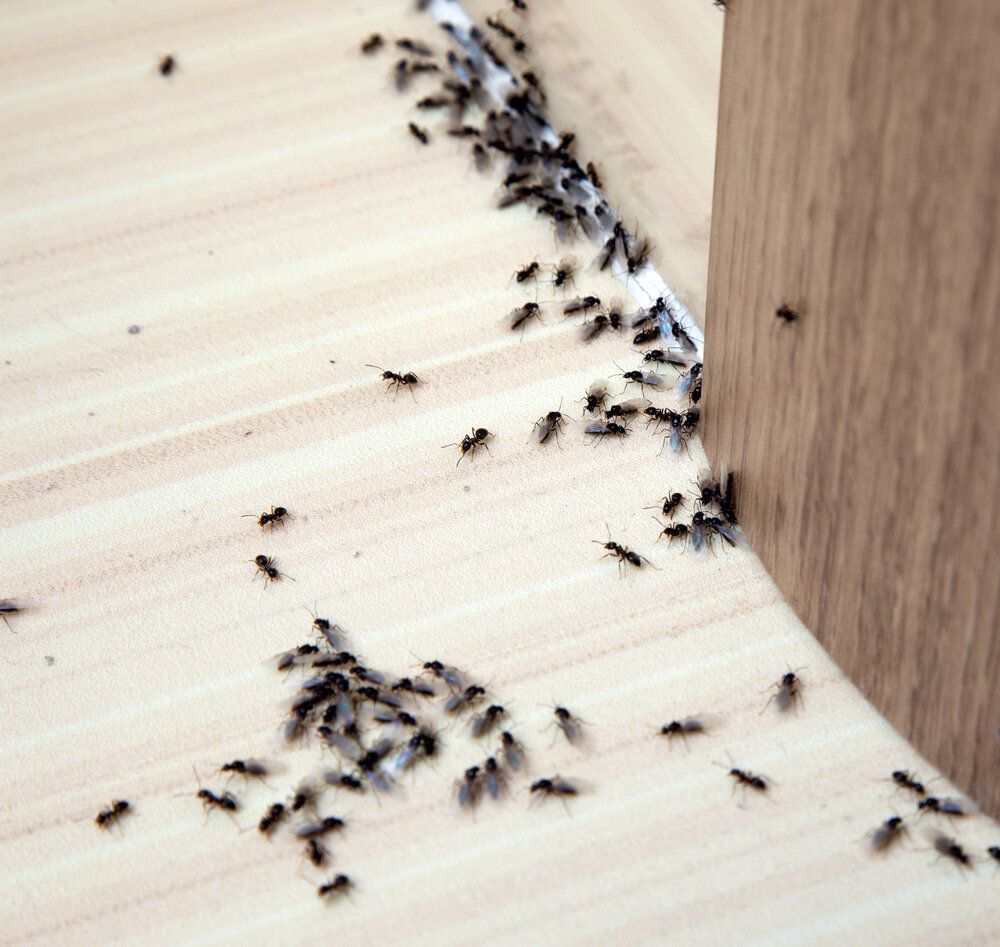Does Construction Cause Pests to Be More Active
Why Does Construction Seem To Cause More Pests?
Construction activities can significantly influence pest behavior, often causing an increase in pest activity. Let's dive into how construction impacts pests and explore the necessary steps to manage these issues as effectively as you can. Sometimes, however, the pest problem can be overwhelming and you still might need to call a professional pest control company in your area.
It Disrupts Their Natural Habitat
Construction disrupts the natural habitats of pests, forcing them to seek new shelters and food sources. This displacement often drives pests such as rodents, ants, and termites into nearby buildings, including homes and commercial properties.
It Can Expose More Food & Water Sources For Bugs
Construction sites often provide ample food and water sources for pests. Leftover food, standing water, and building materials create an inviting environment for pests like rodents and insects.
There Are Often Gaps In Buildings For Periods Of Time
Newly constructed or renovated buildings can have structural vulnerabilities like gaps, cracks, and unfinished sections, which pests can exploit to gain entry. These gaps can be open for days or even weeks.

Common Construction Stages And Pest Activity
Pre-Construction
Before construction begins, pests such as ants, termites, and rodents might already inhabit the land. Treating the ground with pest control measures can prevent these pests from migrating into the new structure. Pretreatment for termites is particularly crucial to avoid future infestations.
During Construction
As construction progresses, the site becomes more attractive to pests. Measures to consider include:
- Setting up bait traps around the site.
- Ensuring proper grading and drainage to avoid water accumulation.
- Keeping the construction site clean by disposing of food waste and debris daily.
Post-Construction
After construction, pests can still pose a threat. To mitigate this:
- Install sodium vapor lights to reduce attraction to flying pests.
- Choose landscaping plants that do not attract pests and maintain a distance from the building.
- Seal entry points with weatherstripping and screens.
Common Signs of Pest Activity on a Job Site
- Visible Pest Sightings: Spotting insects, rodents, or other pests.
- Damage to Materials: Evidence of chewing or gnawing on wood, insulation, and wiring.
- Pest Nests or Droppings: Finding nests or droppings indicates active pests.
- Unusual Odors: Foul smells from pest urine or feces.
- Health and Safety Concerns: Reports of illnesses or injuries related to pest exposure.

How You Can Be Proactive With Pest Prevention
Ask Local Pest Control Professionals For Advice
Contact a local pest control expert at the beginning of your project. They can walk you through the common situations and will guide you in assessing pest activity to implement highly effective control measures. Often a trustworthy pest service company is worth their fee even for a consultation.
Regularly Monitor and Maintain the Job Site
Frequent inspections during and after construction help identify and address pest issues promptly. Continuous monitoring ensures that any new pest activity is quickly managed.
Education and Awareness
Educate construction workers and future occupants about pest prevention practices, such as proper sanitation and the importance of reporting pest sightings immediately.
Why It Might Be Worth Hiring Professional Pest Control
They Have Expertise In Pest Methods & Processes
Professionals use safe and effective pest control methods tailored to the specific pests in your area. Not every area of the country has the same pests. Up in the northwest part of the country, we need ant control and rodent control when construction projects happen. Working with experts helps ensure the well-being of construction workers and future occupants by minimizing any overspill and keeping everything eco-friendly.
Better Long-term Prevention
Oftentimes, professional pest control companies can implement a long-term prevention plan with the building owner. This involves regular check-ups, continuous maintenance and a worry-free situation for tenants and workers. This process involves more cost but can better eliminate annoying pests in the future.
Can Be A Better Cost-Effective Solutions
DIY pest control can sometimes lead to more issues. If anyone in the area is sensitive to chemicals, many DIY options can contain harmful chemicals and lead to health issues. Many homeowners don't do the full research ahead of time and choose the least expensive option.
Construction can indeed lead to increased pest activity, but with proactive measures and professional pest control, you can mitigate these risks effectively. At Redmond Pest Control by Bamboo, we offer comprehensive services to ensure your construction site and new buildings remain pest-free. Contact us today if you live in the state of Washington to learn more about how we can help protect your investment and maintain a safe, pest-free environment. Also check out more of our pest control FAQs here to see how we help homeowners protect their family.
Other Pest Articles You Might Enjoy
Why Do I Suddenly Have Large Flies In My House?
The Best Natural Deterrents For Ants Invading Your Home
What NOT To Do After Pest Control Service Spray?
The Top 5 Most Common Questions About Pest Control
Pest Control Service vs an Exterminator - What's The Difference?
Can Pest Control Get Rid of Roaches?
Can Pest Control Get Rid of Fleas?
